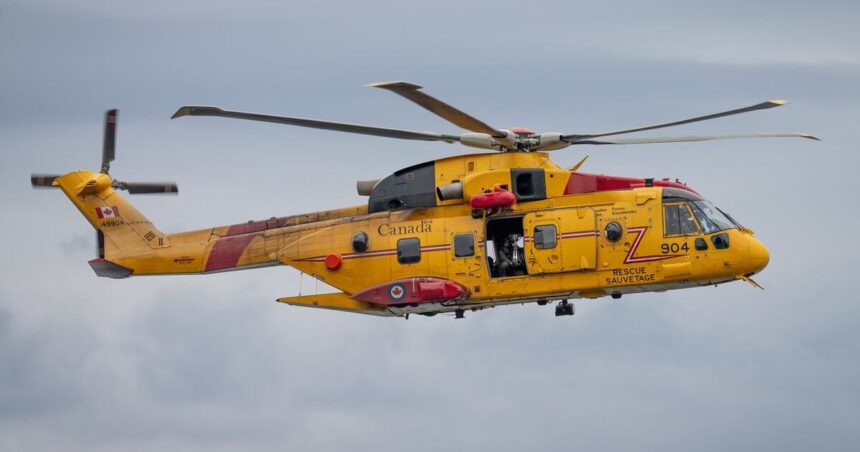I was settling into a routine overnight flight home from Labrador City last month when the pilot’s voice crackled over the intercom: we were diverting slightly to accommodate search aircraft in the area. A sailor had gone missing off the coast.
The news stayed with me. How often do these searches end with reunions rather than recovery operations? More than we might think, as it turns out.
Last night, rescue officials confirmed that a sailor missing off the Labrador coast was found alive after a cargo vessel picked up his distress signal. The man, whose identity hasn’t been released pending family notifications, had been reported overdue from a solo fishing trip Wednesday afternoon.
“This is the kind of outcome our teams pray for,” said Maritime Search and Rescue Coordinator Captain Jean Tremblay when I reached him by phone. “With water temperatures this time of year, every minute counts.”
According to Joint Rescue Coordination Centre Halifax, the sailor’s 21-foot vessel experienced mechanical failure approximately 18 nautical miles northeast of Rigolet. He had departed early Wednesday morning for what was supposed to be a day trip.
The rescue unfolded after cargo ship Northern Horizon, traveling the shipping lane between Goose Bay and Nain, detected a weak emergency radio signal around 9:30 p.m. The vessel altered course to investigate and discovered the stranded boater attempting to signal with a flashlight.
Local resident Martha Winters wasn’t surprised by the community response. “Everyone from Rigolet to Nain was keeping watch,” she told me during a follow-up conversation at the Goose Bay airport. “That’s how we survive up here – looking out for each other.”
The Canadian Coast Guard had mobilized a Cormorant helicopter from 9 Wing Gander alongside vessels from Rigolet and Makkovik after family members reported the man overdue. Weather conditions had deteriorated throughout the afternoon, with fog banks reducing visibility to less than half a kilometer in some areas.
RCMP Constable David Karr confirmed the sailor was found “cold but in stable condition” and transported to the Labrador Health Centre for observation. “He did everything right,” Karr noted. “He stayed with his vessel, had emergency equipment, and remained visible.”
This rescue highlights the particular challenges of maritime safety along Labrador’s coastline. Transport Canada data shows that despite improved vessel safety regulations, the region sees approximately 14-18 serious maritime incidents annually, with numbers typically higher during the short but intense fishing and hunting seasons.
“The reality is that our communities rely on these waters for livelihood and transportation,” explained Memorial University marine safety researcher Dr. Sarah Peterson. “But conditions can change dramatically in minutes, not hours.”
The successful rescue also underscores the critical role of commercial vessels in the maritime safety network. The Northern Horizon is part of the Nunatsiavut Marine fleet that services coastal communities along the Labrador shoreline.
“Commercial operators are often the first to spot or respond to vessels in distress,” confirmed Coast Guard spokesperson Elise Boudreau. “They know these waters intimately and are trained to recognize when something doesn’t look right.”
According to the latest Statistics Canada data, approximately 2,600 search and rescue operations are conducted annually in Canadian waters, with the highest concentration occurring along the Atlantic coastline. Roughly 15% of these involve small vessels where mechanical failure is the primary cause of distress.
While this story ended well, it serves as a reminder of preparedness. Newfoundland and Labrador’s Minister of Public Safety John Hogan issued a statement this morning emphasizing the importance of filing float plans and carrying proper safety equipment.
“Even experienced mariners can find themselves in trouble,” Hogan’s statement read. “This incident highlights why redundant communication systems aren’t just recommendations – they’re essential.”
For communities along the coast, this rescue reinforces the invisible bonds of maritime culture. As I watched passengers scroll through news alerts about the rescue during my connecting flight, there was a palpable sense of relief among the Labradorians returning home.
“You feel it personally, even if you don’t know them,” explained Jeannie Blake, a Nain resident seated beside me. “Because tomorrow, it could be someone from your family out there.”
The rescued sailor is expected to return home this weekend, according to family members who preferred not to be named. His vessel was secured and is being towed back to port by Coast Guard personnel.
As maritime traffic increases along with changing climate patterns in northern waters, incidents like this underscore both the risks and the remarkable resilience of coastal communities. The sea gives life to these places – economically, culturally, spiritually – but demands respect in return.
And sometimes, as in this case, it gives second chances.






